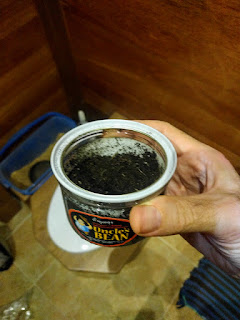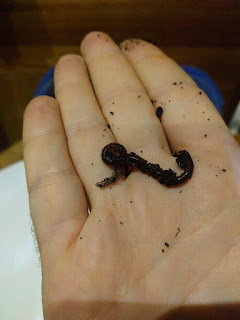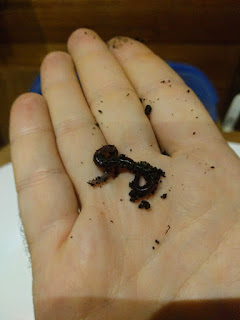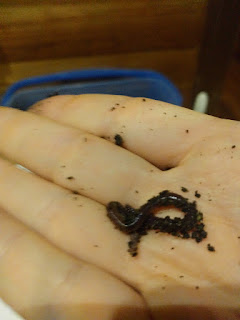Back in August before we started building the composting toilet in BaanRimNaam, I mentioned that the plans we bought were designed for vermicomposting (composting with worms). But when we moved in around New Year’s I decided to just start using the toilet without the worms. Best case is that it would compost, but more slowly. Worst case is that the container would just fill up without any composting at all, and we would just carry it over to a humanure composting pile and dump it every so often.
But the real advantage to the worms is that they compost much more quickly. And I’ve read that loose compost such as this shrinks by as much as 5x. (We cover each “deposit” with a large scoop of loose sawdust to keep it aerobic and absorb any smell.) So if the worms are composting the materials put into the vermicomposter as quickly as it is being filled up, then the container would take about 5x longer to fill up than if it doesn’t compost at all. Based on our estimates, this could mean the difference between switching out the containers every two months, and only once per year.
So I finally got my hands on a couple of worms to experiment with putting them down the chute of the composting toiled and see whether they survive well enough or not.
Than had a friend that he begged a few composting worms off of for me and gave them to me in a rather amusing container:
Uncle’s Beans! Like something straight out of Grimm’s Fairy Tales. With worms inside. 🙂
Anyway, I tried picking one of them up and this wriggler seemed healthy enough as it twisted around in my hand:
If this little experiment is successful as I’m hoping it will be, it should be pretty obvious. Based on this page from Texas A&M University’s Agrilife Extension, under ideal environment, 8 of these worms can reproduce into 1500 little wrigglers in as little as 6 months.
It will be interesting to see how this works. While I don’t really want to be digging around in our toilet to see how they are doing, I’m hoping that after a month or two, the amount of compost shrinkage will be a simple indicator of whether the worms are thriving or not under the surface.




